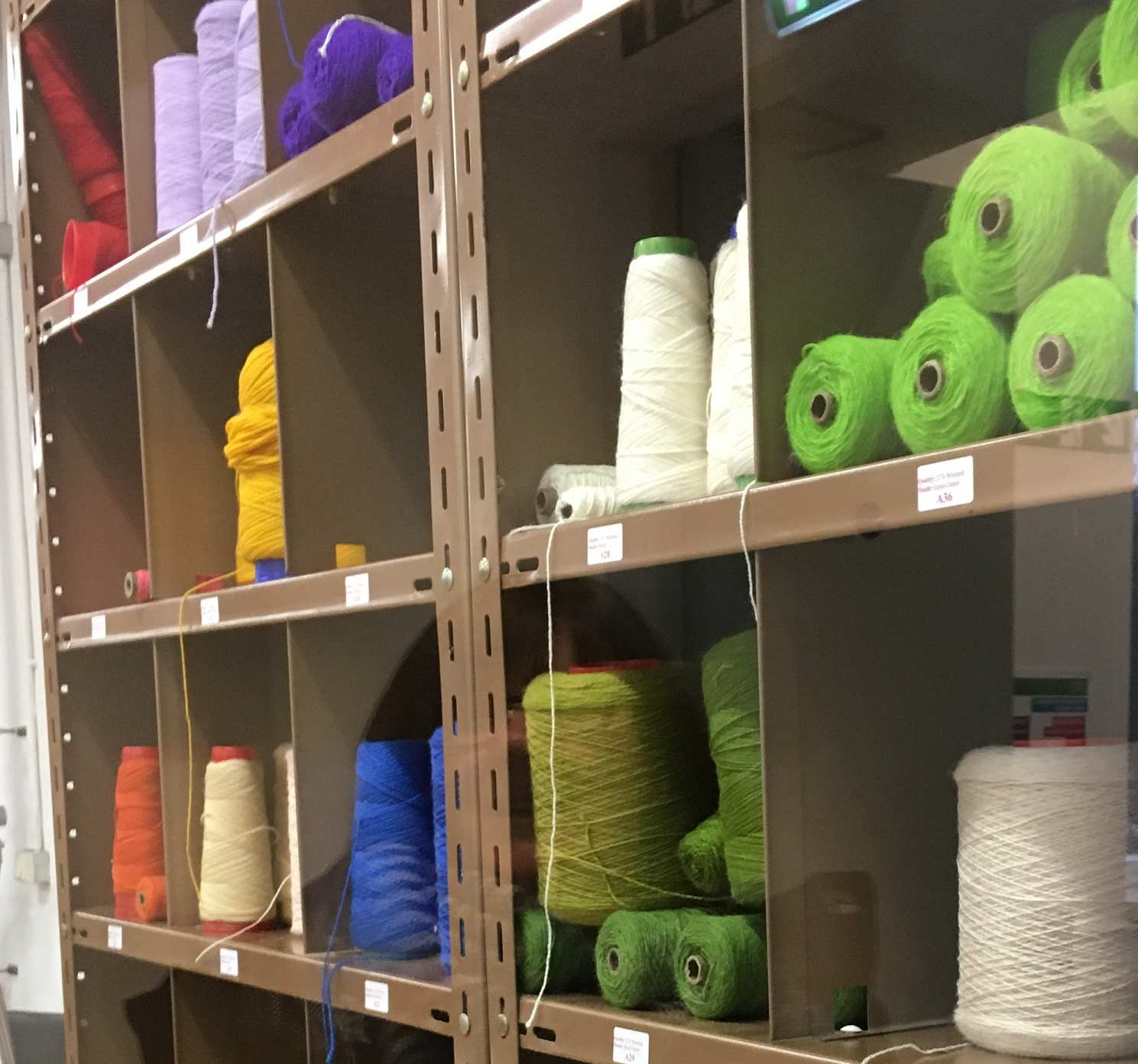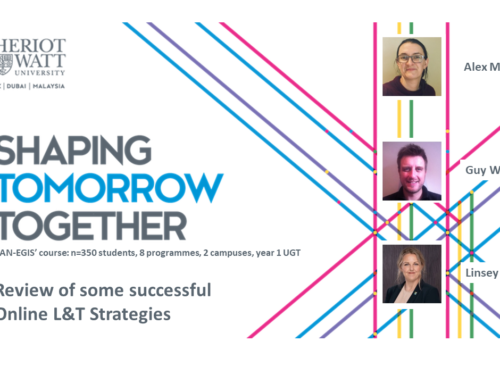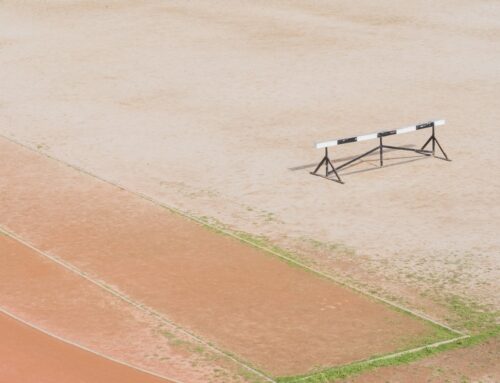Taking the opportunity to pause and reflect now that teaching is underway, Director of Learning and Teaching in the School of Textiles and Design, Lee Miles shares some reflections on the first four weeks of Responsive Blended Learning and the value of moving beyond our comfort zone.
Seeing the opportunity in every crisis
For us in the School of Textiles and Design the start to the new semester has been what I could describe as a ‘revitalising challenge’. It has been revitalising in the sense that we moved rapidly into what has been a very unknown territory for us, and this has given us the opportunity to rethink and rewrite the ‘rule book’ – which has reinvigorated our staff and students. At times this has been exciting – but this has also been tempered with the anxiety of the unavoidable ongoing uncertainty and wondering what might happen next.
I think we can all relate to and understand the scale and nature of the current challenge. Gradually learning all the new tools available to us, translating what can often be quite tactile learning to a more screen-based format, along with building and sustaining a very distributed and diverse community of students, are just some of the challenges predicted and then encountered. There are no easy quick fixes to these – but there is a need to persist and preserve until what was once new and unusual becomes the norm.
In essence our RBL mode has worked very well in providing a common framework but also the flexibility which has been vital in allowing us to remain engaged with so many students all around the world.
Planning ahead
Planning has proven vitally important in our School. Since March we have been looking ahead and all staff within the School have made personal sacrifices along with so much additional effort to work towards delivering RBL. Adapting to the ‘new normal’ has taken significant energy and a lot of self reflection around what it means to teach in 2020 against the backdrop of a global pandemic but I believe we have learned we are at our best when faced with problems to solve (and especially when the student experience is at risk).
In advance of the year we made the decision to remove a substantial number of courses with the intention of forming bigger teaching teams and also larger credit courses. We also reviewed and scaled down the actual contact time between staff and students to ensure students do not suffer from screen fatigue and to provide staff with more time outside of teaching. Alongside this we also set ourselves the target of more shared course delivery between both our UK and Dubai campus – 40% of all UG courses are now shared between both campuses, via a single global teaching team. This has already led to significant change in our approach and thinking.
At the time these decisions were uncomfortable as they seemed somewhat radical, but sometimes the bigger danger is in doing nothing and remaining the same as things around change and develop. Although these decisions seemed counter intuitive at the time, I can appreciate in hindsight this was exactly as it should feel – given our frame of reference has moved on so much in such a short period of time.
Making mistakes and learning from them
The above may sound incredibly positive, but I think we can safely also say we have made mistakes along the way. But we have so far coped well with these. A combination of empathy with the students and also the ability to quickly reflect and adapt, and often even to share these mistakes, are the most indispensable tools right now. Making mistakes is normal as we are all trying new things and can sometimes be too quick to judge their impact and success or end up holding ourselves to standards used in the past (in a time long, long, ago, before RBL). Building and maintaining the confidence to do this is important, as without this confidence we run the risk of losing focus and the enthusiasm to get up every day and try something new, which is important in order to sustain student engagement.
Often the unexpected happens, and via RBL this can be a good thing as it permits this and somewhat normalises it. During one of my classes last week for example our cat decided it would join in my online live lecture, by jumping onto my lap and facing the class on screen. This seemed to provoke an amazing response from the students watching. I am now fully expecting the cat to get better student feedback than myself at the end of the semester…
Our students have likewise demonstrated exceptional resilience and professionalism in adapting to this new way of learning, embodying the Heriot Watt Graduate Attributes we sought to inspire and instil in them. We have received positive feedback that suggests students are, on the whole, enjoying studying from home. Many like the freedom it offers, along with the chance to review learning materials and see what might be coming up next. Those that have been invited into the campus, where there is a specific reason for them to learn there, have attended in very high numbers and have expressed feeling secure and happy with the experience.
We do however have a diverse body of learners and it has been imperative to put inclusivity and empathy at the heart of everything we do. We are now in the process of identifying those who are struggling to adjust and intend to support them as best we can. Although we can accept many things are beyond our control, it is important to note and appreciate the transformational effect our institution has on shaping the outlook of our students and their lives. I am sure our students have been looking to us to provide a sense of security and stability through this uncertain time and I am very glad to see we have delivered upon this – often going above and beyond the traditional remit of teaching in order to act as excellent role models by providing a source of inspiration, stability, and professionalism.
Looking ahead, our next task is to sustain the engagement and motivation. At this point in time we can see what we have gained such as new tools, new channels, and new concepts. But with this comes the need to identify what may be being lost. As with all change there is a risk sometimes the new may replace the old, but we do need to hold on to core fundamental qualities of good teaching regardless of what channel is being used, such as collaboration, trust and respect, and guidance delivered in an inspirational way.
Our success in adjusting to this new way of work rests collectively with all people involved – staff and students alike. I hope we can soon find the time to pause and reflect on this and pass on our thoughts and thanks to our peers who have all worked so hard to support each other.
Summing up
We are all now tasked with creating the ‘new’. With this comes doubt, and as I tell my students, this means you are beyond your comfort zone and into the ‘new’. We cannot expect much certainty in this, and that’s normal. It seems important to use doubt as a positive force for progress, rather than a reason for panic.
I’ll end my blog post with a quote from Milton Glaser, and much like the above, I would advocate a different perspective on doubt, by seeing it more as an indicator that we are all trying something new , learning as we go, whilst in the middle of an opportunity to rethink what, and how, we do things.
“Certainty is a closing of the mind. To create something new you must have doubt.”
Milton Glaser
Lee Miles is the Director of Learning and Teaching in the School of Textiles and Design, Heriot-Watt University.
Further Resources:
- Practice based activities: Labs, studios and fieldwork’ guide
- Practice based activities: Guidance and case studies’ guide
- RBL: Top tips for teaching in physically distanced contexts
- Managing your virtual classroom
- Introducing Responsive Blended Learning module materials






